“Which English translation of Don Quixote should I read?”
I found so much information on translations of Don Quixote that I had to split this post into two. Part 1 of this post talks about the history of the novel, the challenge of translating it, and the pronunciation and spelling of the title. The post gives information about 14 translations published from 1620 to 1995.
This page is Part 2. It focuses on 7 translations published from 2000 to 2020 and gives information about a few related books.
If you just want a quick-and-dirty recommendation on which translation to choose out of all of them, jump to the conclusion at the bottom of this page.
Don Quixote: translations in English
Editions of five of the pre-twenty-first-century translations are in print, and those that were published before around 1920 are no longer under copyright, so scans of them are freely available online. All six of the twenty-first-century translations are in print.
Described in Part 1 (separate page)
- 1620 – Thomas Shelton
- 1687 – John Phillips
- 1700 – Pierre Antoine Motteux
- 1742 – Charles Jervas
- 1755 – Jarvis revised by Tobias Smollett
- 1881 – Alexander James Duffield
- 1885 – John Ormsby
- 1888 – Henry Edward Watts
- 1910 – Robinson Smith
- 1949 – Samuel Putnam
- 1950 – J. M. Cohen
- 1964 – Walter Starkie
- 1981 – Ormsby revised by Joseph Ramon Jones and Kenneth Douglas
- 1995 – Burton Raffel
Described Below (on this page)
- 2000 – John Rutherford
- 2003 – Smollett revised by O.M. Brack, Jr.
- 2003 – Edith Grossman
- 2005 – Tom Lathrop
- 2006 – James H. Montgomery
- 2008 – Jarvis revised by E. C. Riley
- 2020 – Raffel revised by Diana de Armas Wilson
Don Quixote: Translation Comparison
Extracts have been included below so that you can see how the different translations sound.
Don Quixote: Other Info and Resources
For a list of online guides and books about or inspired by Don Quixote including, for example, Ilan Stavans’ very relevant book Quixote, jump down the page.
Who is John Rutherford?
John David Rutherford is a British writer, professor, Hispanist, and translator of works in Spanish.
About the Rutherford translation of Don Quixote
Although he preserves the author’s long sentences, Rutherford chose to use modern language rather than archaic or literary language, as he explains in his introduction, because Cervantes was using the language of his own time.
Translation and Literature: “Review of Cervantes: Don Quixote, translated by John Rutherford” by Arthur Terry
Rutherford’s introduction claims that “translators have failed to emphasize the comic aspects of the novel…. Rutherford divides [translators] into the ‘cavalier’ (Shelton, Motteux, Philips, Smollett) who are vigorous but inaccurate, and the ‘puritanical’ (Jervas to the present day), who take an over-serious view of the text. His own approach is to adopt the strengths of either tendency while avoiding its defects.” And the result? “Rutherford succeeds in bringing out the humour of the original more consistently than any previous translator since the eighteenth century.”
Independent: “When translators play safe we get mediocrity” by John Rutherford
“We can regard the translator not as a passive reproducer of meanings but as an active reader first, and then a creative rewriter of what he has read…. Any translation of this novel is the translator’s account of his reading of it…. [Since] some readings are more appropriate than others, … some translations are better than others.”
The New Yorker: “Knight’s Gambit” by James Wood
“John Rutherford’s recent version for Penguin Classics… takes more liberties with Sancho Panza’s demotic Spanish than Grossman’s does.”
The Miscellany News of Vassar College: “Translations of ‘Don Quixote’ prove accessible, unique’” by Jimmy Christon
Rutherford’s strengths are his humor and verse translations that “felt poetic rather than just rendering the verse from Spanish into English with no regard for meter…. [However,] there’s a sort of stiffness to the language spoken by the characters… [and] there isn’t a clear distinction between the voice of the narrator and the voice of the characters.”
Cervantes Society of America: Review of the Rutherford translation by Tom Lathrop
“I like it that certain Spanish items are translated or explained for English-speaking readers, seemingly as part of the work: ‘His surname’s said to have been Quixada, or Quesada (as if he were a jawbone, or a cheesecake)’.” However: “The translation has a decidedly British slant. The language is very colloquial—the more colloquial the language is, the more region-specific it is. There is nothing the matter with this in principle, let me emphasize, but I wonder how an audience of American students will react to the text, or understand it properly, for that matter.”
Frankly Curious: “Don Quixote in English Langauge Translation” by Frank Moraes
“When people ask me which translation of Don Quixote they should read, I always tell them the same thing, ‘You should read whichever translation you happen to have.’ While it is true that the translations are quite different, they aren’t so different that you should wait to read it. Just grab a copy and start reading it. Just the same, if you are going to buy a new copy, I recommend John Rutherford’s translation from Penguin Classics. It is laugh-out-loud funny — most likely providing the closest experience that early 17th century Spanish readers got from the original.” Visit the link for samples of 12 English versions of the first sentence of the author’s prologue, and for a comparison of the translation of what Rutherford renders as “sorry face”, and for links to more articles about DQ.
Extract from the Rutherford translation of Don Quixote
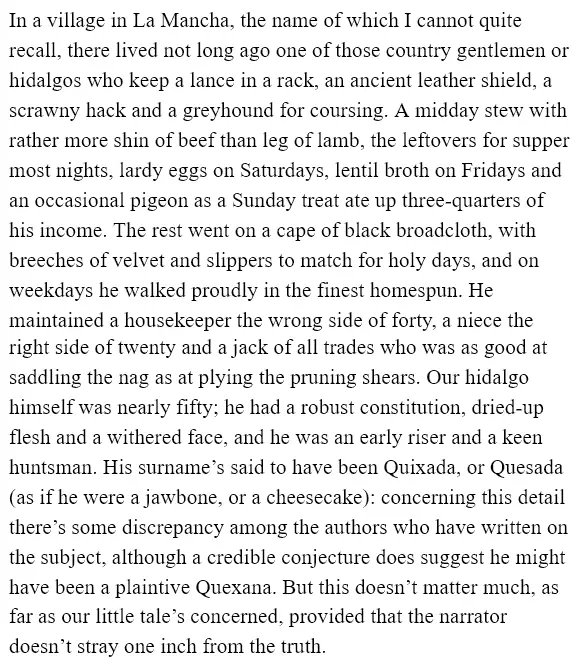
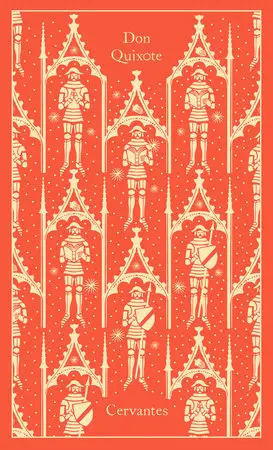
Get the Penguin Clothbound Classics Rutherford translation of The ingenious hidalgo Don Quixote de la Mancha
Includes an introduction and notes by John Rutherford. Cover designed by Coralie Bickford-Smith.
Available as a hardcover (ISBN 9780241347768, 1056 pages).
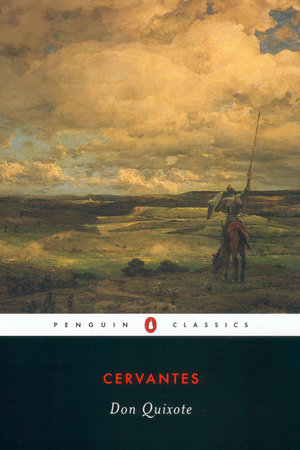
Get the Penguin Classics Rutherford translation of The ingenious hidalgo Don Quixote de la Mancha
Includes an introduction by Roberto Gonzalez Echevarria and notes by John Rutherford.
Available as a paperback (ISBN 9780142437230, 1072 pages).
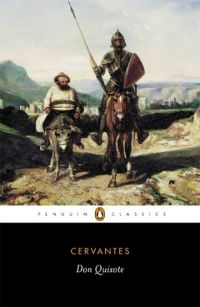
Get the Penguin Classics Rutherford translation of The ingenious hidalgo Don Quixote de la Mancha
Includes an introduction and notes by John Rutherford.
Available as a paperback (ISBN 9780140449099, 1056 pages).
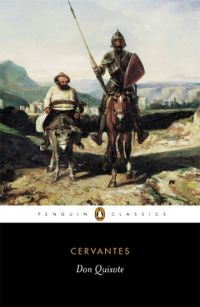
Get the Penguin Rutherford translation of The ingenious hidalgo Don Quixote de la Mancha
Includes an introduction and notes by John Rutherford.
Available as an ebook (ISBN 9780141908335, 1056 pages).
Who was O.M. Brack?
O.M. “Skip” Brack, Jr. was an emeritus professor of literature, editor of a series of works by Tobias Smollett, bibliographer, and expert on Samuel Johnson.
About the Smollett/Brack translation of Don Quixote
See Part 1 for information on the Smollett translation.
From the publisher, University of Georgia Press:
This authoritative textual edition presents Tobias Smollett’s translation of Cervantes’s Don Quixote in the form most faithful to Smollett’s own intentions. It includes Francis Hayman’s twenty-eight illustrations engraved for the original edition, Smollett’s explanatory notes, and his prefatory “Life of Cervantes.”
Smollett’s Don Quixote first appeared in 1755 and was for many years the most popular English-language version of Cervantes’s masterpiece. However, soon after the start of the nineteenth century, its reputation began to suffer. Rival translators, literary hucksters, and careless scholars initiated or fed a variety of charges against Smollett-even plagiarism. For almost 130 years no publisher risked reprinting it.
Redemption began in 1986, when the distinguished Mexican novelist Carlos Fuentes, in his foreword to a new (albeit flawed) edition of Smollett’s translation, declared it to be “the authentic vernacular version” of Don Quixote in English. Fuentes’s opinion was in accord with that of the preeminent Cervantist, Francisco Rodríguez Marín, who decades earlier had declared Smollett’s Don Quixote to be his preferred English version.
Martin C. Battestin’s introduction discusses the composition, publication, and controversial reception of Smollett’s Don Quixote. Battestin’s notes identify Smollett’s sources in his “Life of Cervantes” and in his commentary, provide cross-references to his other works, and illustrate Smollett’s originality or dependence on previous translations. Also included is a complete textual apparatus, a glossary of unfamiliar terms, and an appendix comparing a selection of Francis Hayman’s original illustrations with the engraved renderings used in the book.
Huntington Library Quarterly: “Tobias Smollett and the Translators of the Quixote” by Julie Candler Hayes
“Smollett’s version is… not a revised or secondhand translation as some critics once declared, but a knowing, readerly, and writerly rendition that comments on earlier versions, that encompasses and moves beyond them…. [Smollett’s version was initially popular, being reprinted 20 times.] The critical tide began to turn against Smollett, however, with the assessment of Alexander Tytler, Lord Woodhouselee, whose 1791 Essay on the Principles of Translation included an entire chapter comparing Smollett and Motteux, to the disadvantage of the former…. In the course of the twentieth century, scholars would go so far as to deny Smollett any hand in the translation or indeed any knowledge of Spanish at all, charges that have been thoroughly refuted by Battestin…. Smollett’s range, nuance, and sense of comic delivery are as lively as ever.”
Translation and Literature: “The Translator as Author: Two Quixotes” by Anthony Pym
“Some apparently forged letters revealed that Smollett had not only relied on previous translations into English (which no one denies) but that he knew little Spanish and thus contracted the job out to other hands…. Martin Battestin… amply demonstrates the originality of Smollett’s work… the 1986 version was based on the first edition of Smollett’s translation, did not include Smollett’s revision [and] was not a piece of scholarship…. This one is…. The notes are often good fun, and the glossary is entertaining for more than just Scottish terms…. Read Smollett for colour, fun, and scholarship if you will (but Shelton or Motteux also provide the first two pleasures).”
Extract from the Smollett/Brack translation of Don Quixote
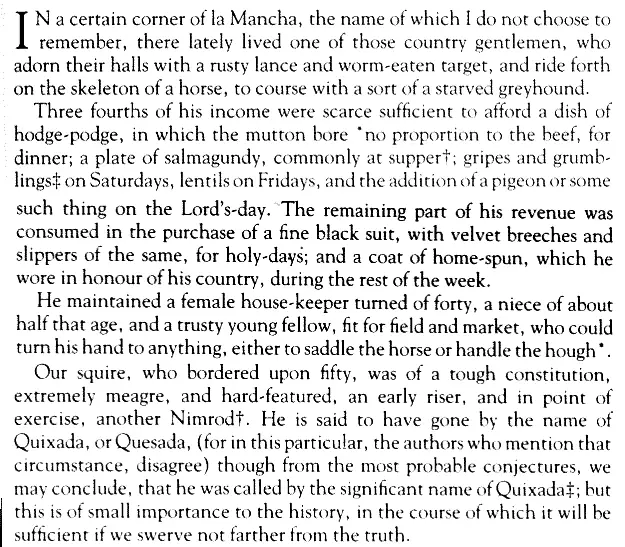
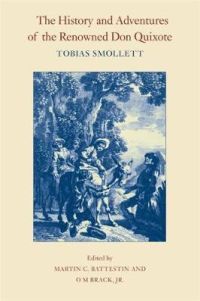
Get the University of Georgia Press Smollett / Brack translation of The History and Adventures of the Renowned Don Quixote
Edited by O.M. Brack. Includes an introduction and notes by Martin Battestin. Also includes Francis Hayman's twenty-eight illustrations engraved for the original edition, Smollett's explanatory notes, and his prefatory "Life of Cervantes."
Available as a hardcover (ISBN 9780820324302, 992 pages).
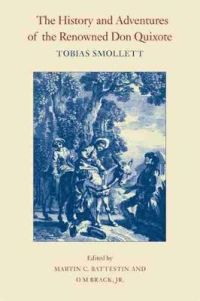
Get the University of Georgia Press Smollett / Brack translation of The History and Adventures of the Renowned Don Quixote
Edited by O.M. Brack. Includes an introduction and notes by Martin Battestin. Also includes Francis Hayman's twenty-eight illustrations engraved for the original edition, Smollett's explanatory notes, and his prefatory "Life of Cervantes."
Available as a paperback (ISBN 9780820346076, 992 pages).
Who is Edith Grossman?
Edith Grossman is an American translator of works in Spanish. She has translated works by Mario Vargas Llosa and Gabriel Garcia Marquez, among others.
» Read an interview about her process.
She is the author of a Yale University Press book titled Why Translation Matters.
About the Grossman translation of Don Quixote
Well, this is the translation everyone is talking about.
Ilan Stavans, in Quixote: The Novel and the World, says that “no recent rendition into English has generated as many accolades as Grossman’s. It has been enthusiastically embraced by readers, but it has also been attacked by some Cervantistas. Is it because she is female? Or because her inclination is to modernize?” (192)
Grossman, like Rutherford, chose to use modern language in her translation, again because Cervantes used what was modern language in his own time.
The Irish Times: “A light touch for the lost knight” by Alison Ribeiro de Menezes
“Grossman has a light touch and an easy style. At times she opts for the more discursive, less punchy option, though this is quite in keeping with the rambling nature of the original…. One of the greatest challenges for translators is to convey an impression of the foreignness of the original whilst maintaining a sense of intimacy between the author and reader of a text. Grossman achieves this admirably.” Grossman’s translation is a “faithful, highly readable rendering”.
The New Yorker: “Knight’s Gambit” by James Wood
“Edith Grossman’s English sensitively captures these shifting registers, as we move from the Knight’s ornate, sometimes pompous diction, via the narrator’s fluent and funny recounting, to the earthy Sancho Panza and his muddier music…. We are fortunate to have at present three excellent translations of ‘Don Quixote’: in addition to Grossman’s, there is John Rutherford’s recent version for Penguin Classics…, and Burton Raffel’s rendering for Norton. All are scholarly and elegant; in some places they are almost indistinguishable. But Grossman… has produced the most distinguished, and the most literary, of them, and those qualities are amply displayed on every page.”
The New York Times: “Tilt” by Carols Fuentes
“To make the classic contemporary: this is the achievement.”
LA Times: “A new Sancho Panza speaks for the knight-errant” by Ilan Stavans
“Grossman inherited from Gregory Rabassa the mantle of the official translator of Latin American letters and has illustriously rendered Gabriel Garcia Marquez and many other writers into English…. Quixote’s monologues in her rendition feel crisp and immediate. This is not to say that Grossman’s translation is perfect. Some word choices are questionable… [and her lack of access to an authoritative source text] seems suggested by her occasional footnotes, which are sometimes outmoded and even wrongheaded.”
Cervantes Society of America: Review by Tom Lathrop of Edith Grossman’s Translation of Don Quixote
“This is a trade book destined for the general reader, and in this role Grossman’s text is ideal—you read it, you get the story, you get lots of footnotes—in an altogether readable format…. There has been a flood of “reviews” of this translation, all favorable… [but] serious students of literature in translation should consider looking elsewhere for more faithful translations, such as Starkie and the discontinued and lamented Ormsby-Douglas-Jones version. There are just too many things that just are not right, or are confusing, in this translation.” Lathrop gives several pages of detailed examples, and also criticizes Harold Bloom’s introduction for not actually introducing the content or context of the novel, or even making useful reference to prominent literary critics. He also points out that Grossman did not work from the best source texts.
Prospect Magazine: “A rational quixote” by Julian Evans
“Edith Grossman’s new translation (apart from brief confusions of ‘thee’ and ‘thou’) is so good that it ought to compel us to start reading the Quixote again. Her text restores Cervantes’s readability, the vitality of his dialogue and characterisation and the darkening quality of his vision. The thought patterns of his madness, which earlier translations obscured by rendering the original too literally or too loosely, are here rendered as logical, and thus funnier and sadder.”
The Atlantic: “High Plains Drifter” by Terry Castle
“Edith Grossman actually makes it easy for you, O frazzled reader, because she has produced the most agreeable Don Quixote ever. Don’t be put off by Harold Bloom’s introduction (major windbag alert in effect); go right to the thing itself.”
New York Times: “Beholding Windmills and Wisdom from a New Vantage” by Richard Eder
Grossman “has provided a Quixote that is agile, playful, formal and wry. Once in a while there are odd choices and, in the translation’s 940 pages, some occasional flagging, but what she renders splendidly is the book’s very heart.”
Guardian: “There is nothing like a don” by Robert McCrum
“Grossman is a veteran of contemporary Latin-American literature. She comes to Cervantes with great experience and a fine ear for the nuances of Spanish and brings off the remarkable feat of giving the reader an utterly modern text that is still, unmistakably, a novel of the seventeenth century.”
Translation and Literature: “The Translator as Author: Two Quixotes” by Anthony Pym
“A translation entirely in the current language of today would necessarily hide the enormous distances travelled by the text, and the reasons why those distances have made it a classic for generations of readers. Grossman’s implicit defence is that, since English has built up a fair stock of archaic Quixotes, the only thing she could possibly add to the pile is a rendition in reasonably contemporary language… [but] a merely contemporary version will also age with the passing of time, adding to the heap, and speaking to no more than one receptive moment. That said, Grossman does rather more than she claims to do…. Unlike most of the other translations, including Smollett and many of those of the twentieth century, Grossman retains Spanish proper nouns and currency units [and includes] the mock sonnets…. [R]ead Grossman for information.”
Extract from the Grossman translation of Don Quixote
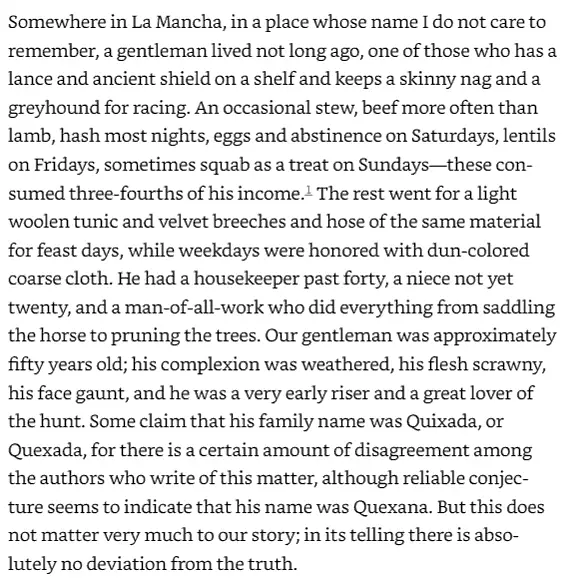
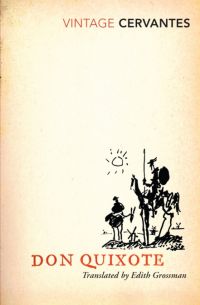
Get the Vintage Grossman translation of Don Quixote
Includes an introduction by Harold Bloom and footnotes by Grossman.
Available as a paperback (ISBN 9780099469698, 992 pages).
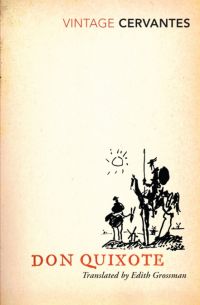
Get the Vintage Digital Grossman translation of Don Quixote
Includes an introduction by Harold Bloom and footnotes by Grossman.
Available as an ebook (ISBN 9781448114177, 992 pages).
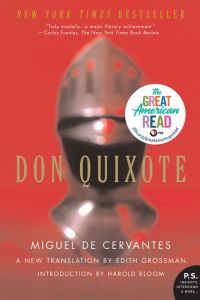
Get the Ecco Grossman translation of Don Quixote
Includes an introduction by Harold Bloom and footnotes by Grossman.
Available as a paperback (ISBN 9780060934347, 976 pages).
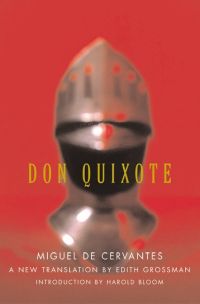
Get the Ecco Grossman translation of Don Quixote
Includes an introduction by Harold Bloom and footnotes by Grossman.
Available as a hardcover (ISBN 9780060188702, 940 pages).
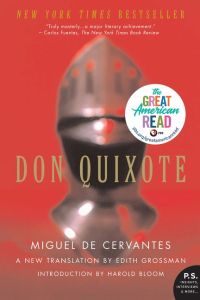
Get the Ecco Grossman translation of Don Quixote
Includes an introduction by Harold Bloom and footnotes by Grossman.
Available as an ebook (ISBN 9780061957888, 981 pages).
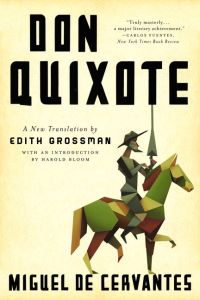
Get the Art of the Story Deluxe Edition Grossman translation of Don Quixote
Includes an introduction by Harold Bloom and footnotes by Grossman.
Available as a paperback (ISBN 9780062391667, 992 pages).
Who was Tom Lathrop?
Thomas Lathrop was an American professor, linguist, writer, editor, translator, and publisher. Walter Starkie, whose translation of Don Quixote was published in 1964, was his professor. He was a founding member of the Cervantes Society of America.
The publishing company he founded, Linguatext, offers materials for study of French and Spanish classics.
About the Lathrop translation of Don Quixote
Lathrop wanted to UNcorrect the text, to create translation that reflects what he felt sure were intentional idiosyncrasies on the part of Cervantes.
Cervantes Society of America: Review by Stephen Hessel of the Lathrop translation
“Throughout his career Tom Lathrop has frequently and fervently argued against the ‘correcting’ that over more than four centuries has transformed some versions of Cervantes’s novel into a very different book. This desire to present Don Quixote, ‘errors’ and all, springs from his belief that these so-called mistakes are instead carefully placed rhetorical ploys…. Perhaps my personal favorite feature of this edition is the fairly direct style of translation. It appears that Lathrop was able to resist the temptation to play with the language in the name of style—an all too common pitfall.”
The Cervantes Society of America: Review by Michael J. McGrath of the Lathrop translation
“Lathrop’s translation is, for the most part, highly accurate…. Lathrop’s translation contains more than a thousand footnotes that explain in detail the literary, historical, and cultural milieu that surrounds the knight’s many adventures…. While the primary target audience of Lathrop’s translation is students of literature in translation at the university level, non-specialists and specialists alike will find Don Quixote a pure joy to read. Lathrop is to be commended for producing a translation that is not only a faithful recreation of the original, but also one that is easy to read and to comprehend.”
Extract from the Lathrop translation of Don Quixote
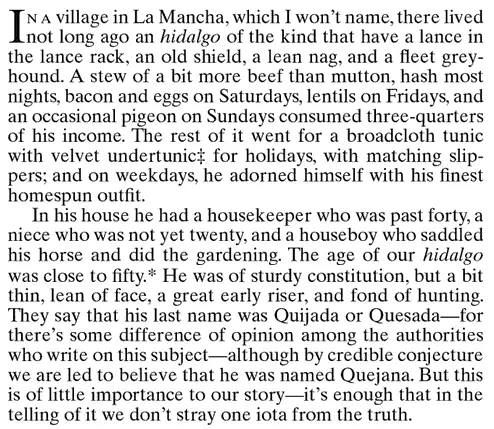
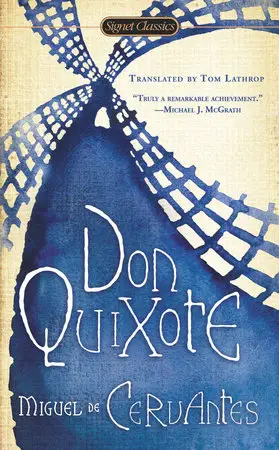
Get the Signet Classics Lathrop translation of Don Quixote
Fourth-centenary translation. Includes footnotes by Tom Lathrop.
Available as a paperback (ISBN 9780451531810, 1072 pages).
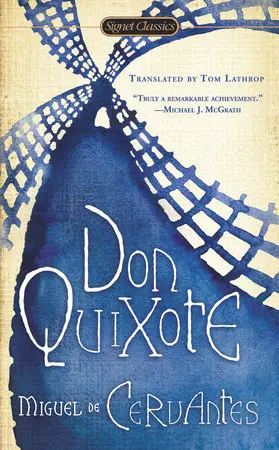
Get the Signet Classics Lathrop translation of Don Quixote
Fourth-centenary translation. Includes footnotes by Tom Lathrop.
Available as an ebook (ISBN 9781101525371, 1075 pages).
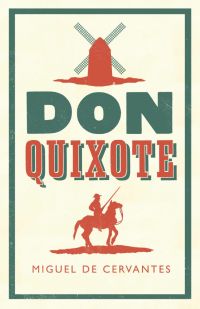
Get the Alma Classics Evergreens Lathrop translation of Don Quixote
Includes an extensive critical apparatus, extra reading material including a section of photographs, and notes.
Available as a paperback (ISBN 9781847493774, 800 pages).
Who is James H. Montgomery?
He is a retired American professor and university librarian.
About the Montgomery translation of Don Quixote
Cervantes Society of America: Review by Michael J. McGrath of the Montgomery translation
“It is evident from the quality of Montgomery’s translations of the proverbs and word-play humor throughout the novel that he values their literary function as well as the impact they have upon the reader’s appreciation of the novel…. The passion with which Montgomery translated the novel… shines through in a translation that is faithful to the language, style, and spirit of the original. The overall quality of Montgomery’s translation is excellent, as I often found myself engrossed in the novel as if the original language were English, and only when I stopped reading did I realize that I was still reading a translation. Notwithstanding the minor deficiencies I noted, Montgomery’s translation merits consideration as one of the most noteworthy English translations of Don Quijote, and I recommend it highly.”
The Sixteenth Century Journal: Review by Alison Weber of the Montgomery translation
“Montgomery’s translation—fluent, unobtrusively modern, and attractively priced—is a welcome addition…. Excellent notes—one wishes there were more, especially for part 2—add to the attractiveness of this very competent translation.”
Extract from the Montgomery translation of Don Quixote
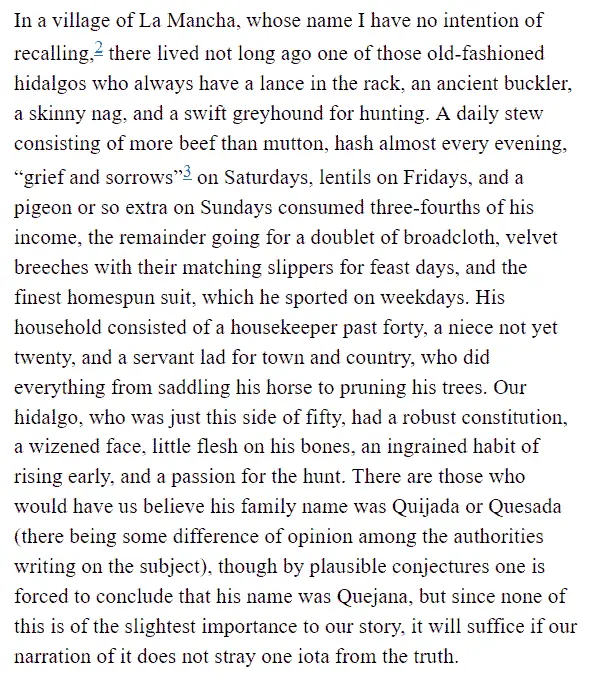
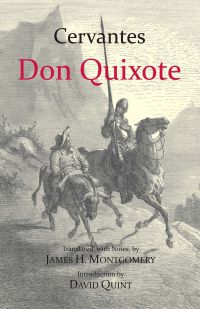
Get the Hackett Classics Montgomery translation of The adventures and misadventures of Don Quixote
Includes an introduction by David Quint, a translator's preface, a list of "the principal works consulted in the preparation of this translation", an index of "selected proverbs, maxims, and passages", and a list for further reading.
Available as a hardcover (ISBN 9780872209596, 896 pages).

Get the Hackett Classics Montgomery translation of The adventures and misadventures of Don Quixote
Includes an introduction by David Quint, a translator's preface, a list of "the principal works consulted in the preparation of this translation", an index of "selected proverbs, maxims, and passages", and a list for further reading.
Available as a paperback (ISBN 9780872209589, 896 pages).

Get the Hackett Classics Montgomery translation of The adventures and misadventures of Don Quixote
Includes an introduction by David Quint, a translator's preface, a list of "the principal works consulted in the preparation of this translation", an index of "selected proverbs, maxims, and passages", and a list for further reading.
Available as an ebook (ISBN 9781603845458).
Who was E.C. Riley?
Edward C. Riley was a professor of Hispanic Studies at the University of Edinburgh. Born in Mexico, he studied at Oxford and worked in Madrid before beginning his professional career in Dublin.
More about Professor Edward Riley at The Herald and The Irish Times.
About the Riley translation of Don Quixote
See Part 1 of this post for information on the Jarvis translation.
From the translator’s note on the text:
“The present edition… does not include Cervantes’s dedications of Parts One and Two or the prefatory verses to Part One, which are absent from Jarvis’s edition. The Introduction, Chronology, and Select Bibliography are entirely new, as are most of the explanatory notes. The text has been updated with modern paragraphing and dialogue markers for the sake of easier reading. The occasional mistranslation or really inadequate rendering—there are not many, given the size of the novel—has been amended.”
Philosophy and Literature: “Don Quixote: Translation and Interpretation” by James A. Parr
“The E. C. Riley edition of Jarvis offers a charming, archaic English that is reasonably close linguistically, in that regard, to Cervantes’s Spanish of the previous century. It is also rather British, and may therefore hold a certain charm for American readers.”
Extract from the Riley translation of Don Quixote
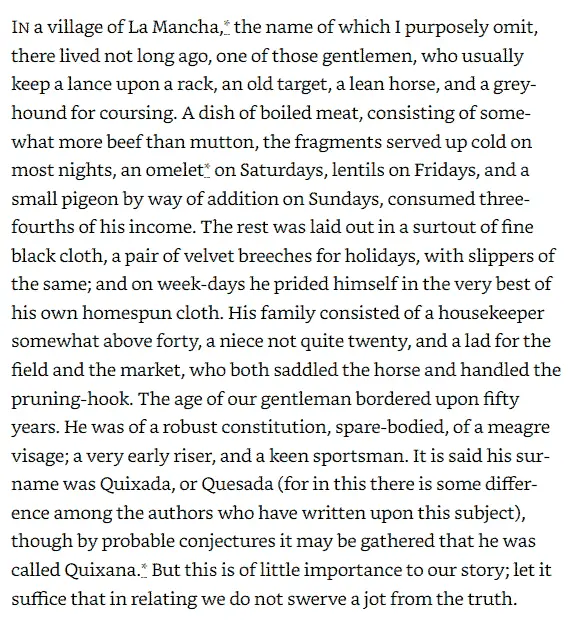
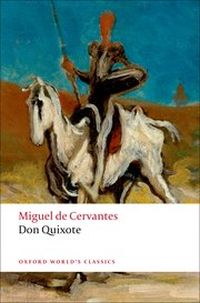
Get the Oxford World's Classics Jarvis/Riley translation of Don Quixote del la Mancha
Includes the Jarvis translation edited by E.C. Riley, a note on the translation, an introduction and endnotes by E.C. Riley, and a chronology of the author.
Available as a paperback (ISBN 9780199537891, 1008 pages).
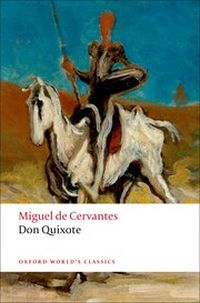
Get the Oxford World's Classics Jarvis/Riley translation of Don Quixote del la Mancha
Includes the Jarvis translation edited by E.C. Riley, a note on the translation, an introduction and endnotes by E.C. Riley, and a chronology of the author.
Available as an ebook (ISBN 9780191561498, 1008 pages).
Who is Diana de Armas Wilson?
She is a writer, a translator, and a professor emerita of English and Renaissance studies specializing in research on Cervantes.
» See Wilson’s profile on Huffington Post
About the de Armas Wilson translation of Don Quixote
See Part 1 of this post for information on the Raffel translation.
Note the J used in the title.
Cervantes Society of America: Review by Steven Wagschal of the Wilson edition of the Raffel translation
“Raffel’s translation is very readable and usually very close to the source text…. [H]is prose style captures much of the essence and the flavor of Cervantes’ original. This kind of pleasurable readability is particularly useful for contemporary North American college students, to whom this series is primarily directed…. Raffel’s translation is highly accurate, for the most part, and unlike J. M. Cohen’s widely-read version…, his prose style has grace and retains much of the Cervantine cadence and irony…. I think most English-speaking college students will prefer Raffel’s to other available translations, including Ormsby’s and Cohen’s…. Diana de Armas Wilson provides an informative introduction and concise footnotes, and has made a good, updated selection of background sources and contemporary criticism. The introduction contains clear biographical information (and there is an accompanying time-line of Cervantes’ life as an appendix). In addition, it presents important information on the romances of chivalry, which all students should know before reading the novel…. The five general interpretations and reflections on Don Quijote are all insightful, well-edited, and complementary…. The nine contemporary pieces of criticism… provide a good sampling of some of the major directions that Quijote studies have followed in the last quarter-century.” Among the minor criticisms are: preliminary materials are omitted; Raffel’s translation of the opening sentence of the novel sounds bad; sometimes dialog sounds too contemporary; more footnotes might have been useful; Raffel anachronistically replaced the original currency with dollars!!!
Extract from the de Armas Wilson translation of Don Quixote
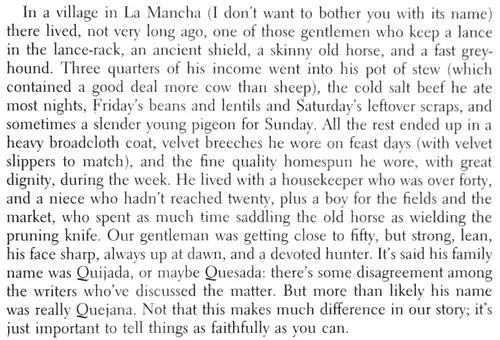
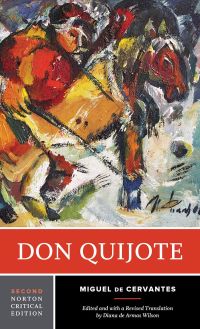
Get the Norton Raffel/Wilson translation of Don Quijote
2nd Norton Critical Edition. Includes the Raffel translation edited by Diana de Armas Wilson, a translator's note, a revised and expanded introduction and footnotes by Wilson, contextual materials, fifteen critical essays, a chronology, and a selected bib
Available as a paperback (ISBN 9780393617474, 864 pages).
It would be hard to overstate the impact that Don Quixote has had on Western culture. The legacy of Cervantes includes uncounted translations in other languages across the world as well as the English translations enumerated here; the adjective ‘quixotic’ and the idiom “tilting at windmills”; various plays, operas and ballets, not to mention the 1965 musical Man of La Mancha; and a variety of paintings and other artworks. It was the antecedent of many other literary works, including The Life and Adventures of Tristam Shandy, Madame Bovary, and The Idiot.
Cervantes Society of America: “Prince Myshkin as a Tragic Interpretation of Don Quixote”
“No one doubts Fyodor Dostoevsky’s profound and direct indebtedness to Miguel de Cervantes in The Idiot, manifested in the obvious connection between Don Quixote and Prince Myshkin.”
Guides to Don Quixote
Reading notes can give you a better understanding of what’s going on in this mammoth work.
Books about and Inspired by Don Quixote
Below are listed a few related fictional and non-fictional works that may be of interest.
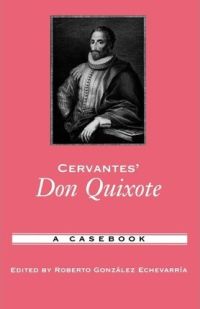
Get Cervantes: Don Quixote by Roberto Gonzalez Echevarria (editor)
"All these essays ultimately seek to discover that which is peculiarly Cervantean in Don Quixote and why it is considered to be the first modern novel."
Available as a paperback (ISBN 9780195169386, 296 pages).
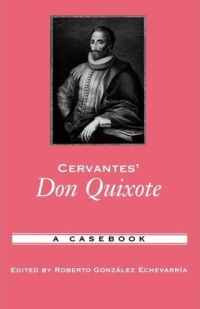
Get Cervantes: Don Quixote by Roberto Gonzalez Echevarria (editor)
"All these essays ultimately seek to discover that which is peculiarly Cervantean in Don Quixote and why it is considered to be the first modern novel."
Available as an ebook (ISBN 9780199960460).
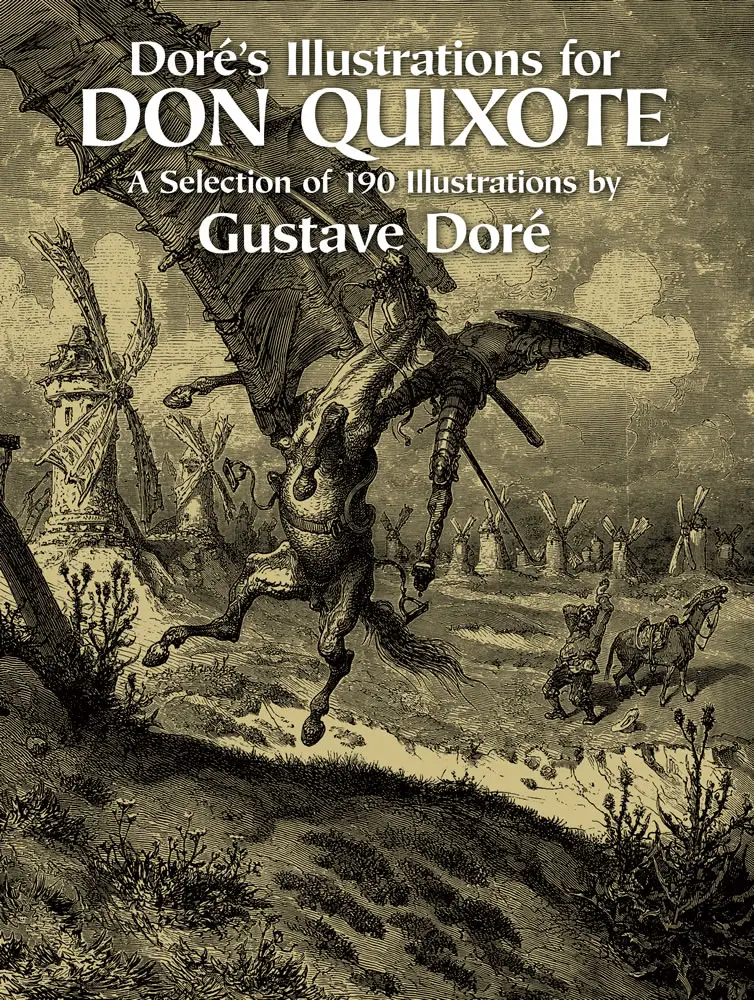
Get Doré's Illustrations for "Don Quixote": A Selection of 190 Illustrations by Gustave Doré
"The French translation of Cervantes that Doré illustrated is forgotten; here is the memorable remnant of that work -- all 120 full-page plates, plus a selection of 70 characteristic headpiece and tailpiece vignettes."
Available as a paperback (ISBN 9780486243009, 160 pages).
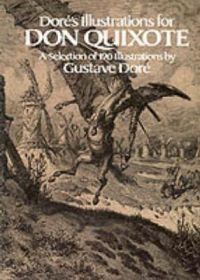
Get Doré's Illustrations for "Don Quixote": A Selection of 190 Illustrations by Gustave Doré
"The French translation of Cervantes that Doré illustrated is forgotten; here is the memorable remnant of that work -- all 120 full-page plates, plus a selection of 70 characteristic headpiece and tailpiece vignettes."
Available as an ebook (ISBN 9780486136943, 160 pages).
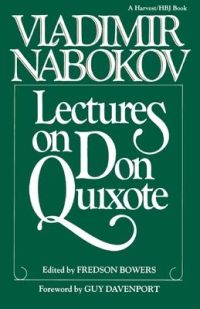
Get Lectures on Don Quixote by Vladimir Nabokov
"A fastidiously shaped series of lectures based on a chapter-by-chapter synopsis of the Spanish classic. Rejecting the common interpretation of Don Quixote as a warm satire, Nabokov perceives the work as a catalog of cruelty through which the gaunt knight passes. Edited and with a Preface by Fredson Bowers; photographs."
Available as a paperback (ISBN 9780156495400, 240 pages).
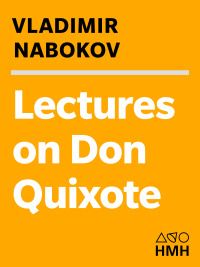
Get Lectures on Don Quixote by Vladimir Nabokov
"A fastidiously shaped series of lectures based on a chapter-by-chapter synopsis of the Spanish classic. Rejecting the common interpretation of Don Quixote as a warm satire, Nabokov perceives the work as a catalog of cruelty through which the gaunt knight passes. Edited and with a Preface by Fredson Bowers; photographs."
Available as an ebook (ISBN 9780544998087).

Get A Companion to Don Quixote by Anthony Close
"Beginning from a review of Don Quixote's relation to Cervantes's life, literary career, and its social and cultural context, Anthony Close goes on to examine the structure and distinctive nature of Part I (1605) and Part II (1615), the conception of the characters of Don Quixote and Sancho, Cervantes's word-play and narrative manner, and the historical evolution of posterity's interpretation of the novel, with particular attention to its influence on the theory of the genre. "
Available as a paperback (ISBN 9781855662087, 296 pages).
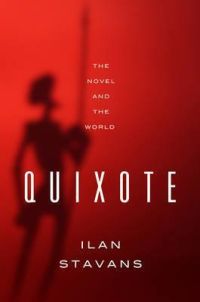
Get Quixote: The Novel and the World by Ilan Stavans
"A groundbreaking cultural history of the most influential, most frequently translated, and most imitated novel in the world."
Available as a hardcover (ISBN 9780393083026, 288 pages).
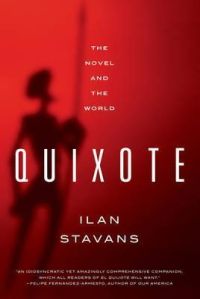
Get Quixote: The Novel and the World by Ilan Stavans
"A groundbreaking cultural history of the most influential, most frequently translated, and most imitated novel in the world."
Available as a paperback (ISBN 9780393353426, 288 pages).
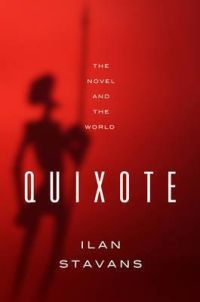
Get Quixote: The Novel and the World by Ilan Stavans
"A groundbreaking cultural history of the most influential, most frequently translated, and most imitated novel in the world."
Available as an ebook (ISBN 9780393248388).
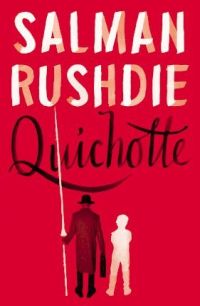
Get Quichotte by Salman Rushdie
"In a tour-de-force that is both an homage to an immortal work of literature and a modern masterpiece about the quest for love and family, Booker Prize-winning, internationally bestselling author Salman Rushdie has created a dazzling Don Quixote for the modern age." Shortlisted for the 2019 Booker Prize. Many editions available.
Available as a paperback (ISBN 9781787331921, 416 pages).
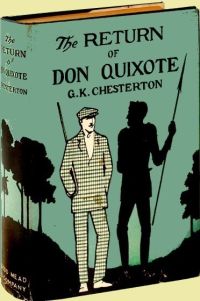
Get The Return of Don Quixote by GK Chesterton
"In the prophetic climax of the tale, Herne warns about the unnatural growth of the machine. “Things have grown incalculable by being calculated. You have tied men to tools so gigantic that they do not know on whom the strokes descend.” Don Quixote tilts at the mills once more. He is fighting a mechanical beast."
Available as an ebook.
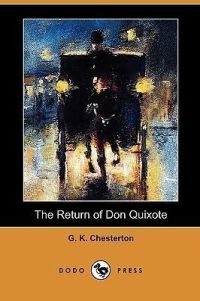
Get The Return of Don Quixote by GK Chesterton
"In the prophetic climax of the tale, Herne warns about the unnatural growth of the machine. “Things have grown incalculable by being calculated. You have tied men to tools so gigantic that they do not know on whom the strokes descend.” Don Quixote tilts at the mills once more. He is fighting a mechanical beast."
Available as a paperback (ISBN 9781409931256, 198 pages).
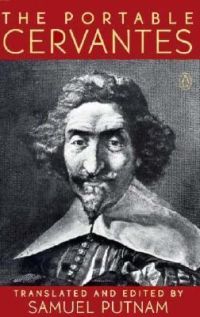
Get The Portable Cervantes by Putnam
Contains an introduction; list of suggested readings; Don Quixote "substantially complete, with all omitted passages covered by editorial summaries"; the novel Rinconete and Cortadillo; the novel Man of Glass; "Foot in the Stirrup", Cervantes' Farewell to Life; and endnotes on all three novels. This book is out of print, but you may be able to find a second-hand copy.
Available as a paperback (ISBN 9780140150575, 864 pages).
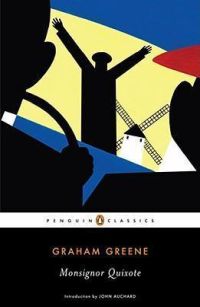
Get Monsignor Quixote by Graham Greene
From Wikipedia: "A pastiche of the classic 1605 and 1615 Spanish novel Don Quixote by Miguel de Cervantes with many moments of comedy, but also offers reflection on matters such as life after a dictatorship, Communism, and the Catholic faith."
Available as a paperback (ISBN 9780143105527, 224 pages).

Get The Female Quixote by Charlotte Lennox
"The Female Quixote (1752), a vivacious and ironical novel parodying the style of Cervantes, portrays the beautiful and aristocratic Arabella, whose passion for reading romances leads her into all manner of misunderstandings."
Available as a paperback (ISBN 9780199540242, 464 pages).
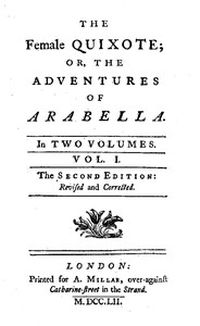
Get The Female Quixote by Charlotte Lennox
"The Female Quixote (1752), a vivacious and ironical novel parodying the style of Cervantes, portrays the beautiful and aristocratic Arabella, whose passion for reading romances leads her into all manner of misunderstandings."
Available as an ebook.
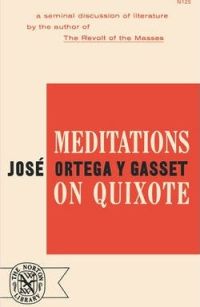
Get Meditations on Quixote by by Ortega y Gasset, José,
"First published in 1914, Meditations on Quixote was Ortega's first book. It has immensely grown in value with time, and since the 1930's, when Ortega himself began to refer back to it in his later writings, it has become more and more important among students of his philosophy as a key to fuller understanding of his work. It may be said to represent the core of Ortega's thought, especially in regard to art and literature."
Available as a paperback (ISBN 9780393001259, 196 pages).
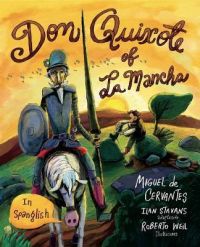
Get Don Quixote of La Mancha : (in Spanglish) by Ilan Stavans
"En esta adaptacion groundbreakeadora, el comentarista cultural Ilan Stavans y el ilustrador Roberto Weil reimaginan la masterpiece de Cervantes en ways que son a la vez faithfules y whimsicamente irreverentes."
Available as a paperback (ISBN 9780271082301, 136 pages).
What’s the best Don Quixote translation?
What if there is no single best translation of Don Quixote?
Ilan Stavans says: “Given the assortment of interpretations, it isn’t advisable to suggest that a single English translation of Don Quixote is the best. I prefer to compare them—that is, to keep them all at my side. I believe the true spirit of Cervantes’ novel is to be found not by subtraction but by addition.”
Having learned so much about the different translations, and how the act of translation was performed in different periods by different translators, in different styles of language, I’m inclined to agree. If you can’t read Spanish, probably you need to read multiple English versions to avoid missing out on the sound or sense of the original.
“Yes, but what’s the best translation of Don Quixote if I *have* to choose?”
As I’ve noticed with other books that have been translated multiple times, many of the translators go out of their way to disparage previous efforts—though never in any other case have they had as many predecessors to disparage! The case of Smollett is particularly interesting: whether you believe in the worth of his work (assuming it was even his) depends entirely on whose account you believe.
And that’s the case with opinions about translations in general. Setting aside the opinions of translators, there’s still no actual consensus. Whose recommendation are you going to take? That of a scholar at the University of Georgia? A New York Times, Guardian, or New Yorker columnist’s? That of a member of the Cervantes Society of America? Your professor’s? An articulate redditor’s? Your cousin’s? Mine?
My impression of the conventional wisdom is that Grossman is the trendy one, and Ormsby is the most popular of the old ones (and if you want you can get it for free).
But my advice is, if your purpose is enjoyment (rather than scholarly study), read some excerpts and decide whose writing you think you’ll enjoy the most, because you’ll be reading his or her writing for many hundreds of pages.
No matter which you choose, it’s a wild ride.

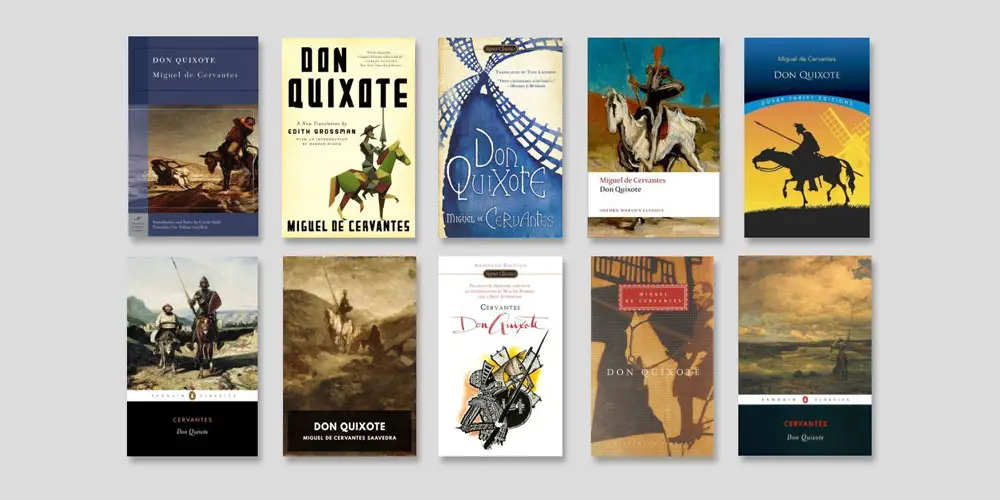
I had to give up on the Ormsby as tedious and dry; continuing to read it had become downright painful. A switch to the Grossman, and the difference was like night and day. The book came alive and was finally as funny as so many have claimed.
YMMV, but that was my experience.
Thanks for sharing your experience, Aquaria! It’s great to hear from someone who read the Grossman translation *and* another translation, who can therefore compare/contrast them.
Fine work, Lucy. Thanks.
Thank you for the positive feedback!
You are most welcome.
I am putting a link to you in the endnotes for my book.
(It’s my guide to Mexico City. “Don Quixote”, perhaps surprisingly, enjoys some importance in Mexican culture.)
You display a (C) 2021 notice.
So 2021 was the year you first posted your Parts 1 and 2?
(I include a publication date with the citation.)
Thanks.
Wow, the website gets to be mentioned in a book? That’s great! The two posts about the Don Quixote translations were published March 28, 2022.
I didn’t know Don Quixote is important in Mexican culture. Interesting. Thanks so much, Dave!
(An unpublished book! The only kind I know how to write!)
Mexico’s most important annual arts festival is the Cervantino in Guanajuato, named after Cervantes. One of Diego Rivera’s houses is there in Guanajuato.
In English, many of us would have been exposed to the book through “Man of La Mancha” and “The Impossible Dream”. I certainly was at an early age. But that only deals with the beginning of Part I.
But the famous (if you speak Spanish) Madrid rock band Mägo de Oz released their concept album “La Leyenda de La Mancha” in 1998. It deals with far more of the book. The album’s big hit “Molinos de viento” (Windmills) has 124 million views at YouTube as of today.
I know about this band and this album because Mexicans told me about it.
Cool! Here’s the YouTube link in case anyone’s interested:
» music video of “Molinos de Viento” (Windmills) by Spanish rock band Mägo de Oz
Immensely valuable – thanks!